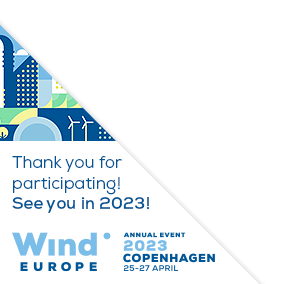Posters
Siblings:
ProceedingsProgrammeSpeakersPostersContent PartnersGlobal Markets TheatreWindTalks for InnovationProgramme Committee & Abstract ReviewersSpeaker's DashboardCome meet the poster presenters to ask them questions and discuss their work
Check the programme for our poster viewing moments. For more details on each poster, click on the poster titles to read the abstract. On Wednesday, 6 April at 15:30-16:15, join us on Level 3 of the Conference area for the Poster Awards!

PO206: Assessment of wind turbines fatigue life consumption at the site
Dimitris Manolas, Research engineer and Partner, iWind Renewables PC
Abstract
Wind turbines (WT) are normally designed for 20-25 years lifetime. However, actual (site) conditions under which turbines operate are usually milder than those considered during the design process, allowing for an extended service life that can be appreciated through theoretical analysis even before the wind farm construction. Service life extension of an asset has a positive impact on its economics. Furthermore, due to the liberalisation of the electricity market, wind farm operators are obliged to participate in the daily market, thus having the opportunity to value their bidding prices and income against the real-time fatigue life consumption of their assets. It is therefore important to have the ability to reduce production in periods of low prices but high life consumption. In this work, we present a comprehensive methodology for estimating fatigue loading and expected service life of wind turbines in connection to their power production. The procedure comprises servo-aero-elastic calculations, CFD site assessment and SCADA analysis, which are combined with a neural network-based regression algorithm to obtain fatigue loads, as well as lifetime and power production estimates. It is a real-time, time domain approach, which depending on the level of detail can accurately assess the effect of various operational or control modes (e.g. derating modes, soft shut down/storm control, etc) on the fatigue consumption. Representative results are shown for the estimated lifetime per component and WT, whereas the work is concluded by suggesting replacements to extend WT’s service life, in combination with alternative sector management schemes.










Follow the event on: